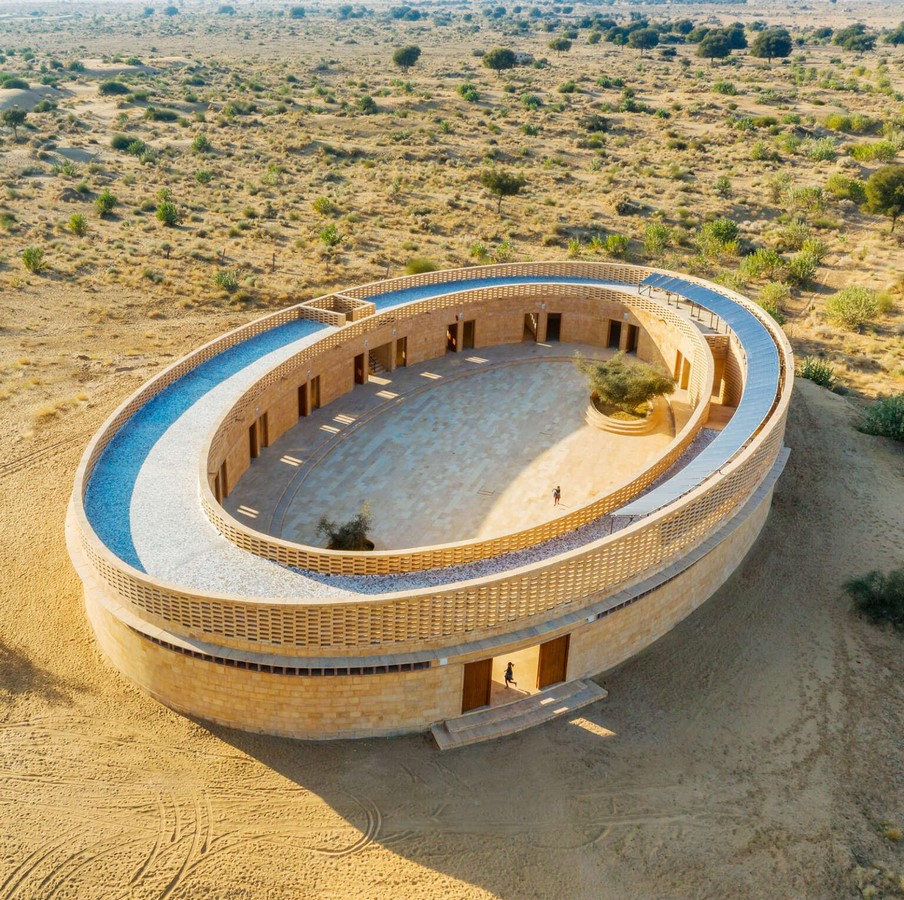With Climate Change a serious concern that needs addressing on a serious note, Sustainable Buildings can play a major role by contributing to less usage of energy and fewer Emissions and finally putting it on a bigger picture of reducing emissions by the construction sector as a whole.
According to Building stock development that is happening Around the world, New and existing ones have been responsible for carbon emissions in some way or other. Therefore, as important as it is now to take care of new building construction processes and the life cycle of a new building, it has turned equally important to take care of already existing stocks to convert them into low-emitting buildings during their retrofitting period.
With almost 223 billion square metres of existing Building stock and new upcoming Building Stock, the Construction Industry has graciously contributed to the emissions and in the long term will continue to do the same as the demand has always been growing higher from developing to developed countries for spaces to accommodate the growing population.
According to the Future climate, the newer stock and the old stock of Buildings are much in need of mitigation strategies to sudden changes in weather and being adaptive to extreme changes that are mostly predicted.
With the extreme events occurring and predicted in the future of the climate the urgency to address and come up with mitigation strategies for both existing and new Building stocks has been an urgency.

Climate Responsive Design In the Current Scenario
The climate-responsive design has been considered recently as a solution to control the emissions contributing to the construction industry emissions. It may contribute to slowing down the process of global carbon emission and in turn help in slowing down global warming. But, the percentage of such building development across the globe has been slow enough, since all countries are different and come up with their terms to define sustainable living and Buildings. Probably even after a good amount of research and uptake of climate-responsive design, few countries might be falling behind and contributing factors be many.
Climate responsive Buildings come with their own set of negatives and positives and are perceived differently by different geographic locations. Therefore, it has been very crucial to keep in mind as the progression of climate-responsive Buildings has happened until now, to note the different factors that could be different to different countries of the world and their persistence. Factors like Behaviour, cultural aspects of society or the economic context of a country etc. could also be affecting the perception of a Climate Responsive Building. All factors are intertwined with the development of the concept of green Buildings and climate Responsive Buildings have evolved.

Beyond ZEB, ZEN and other Sustainable Buildings
When buildings are thought of, the end user is the ultimate evaluator of all. Therefore, even in the case of Green Buildings, it has been very important to be sensitive to users. Users comply with many factors collectively contributing to the Development of a good energy-efficient Building.
Sustainable Buildings to be thoughtful and progressive from the current cycle of contribution to reducing global emissions and being socio-economically viable will be a thing to look forward to. Studies have always suggested that sustainable Buildings have achieved highly ambitious targets of reducing the usage of energy and emissions but have had the least focus on social sustainability and addressing the constructions socially. Sustainable Buildings have to have better balance and integration of multi-domain subjects to be also part of the future along with coming up with mitigation strategies to cope with climate change.

For sustainable Buildings to move ahead of their current expectations into their role, they are well expected to have a check for their performance and collectively contribute in the future. Future Buildings might be more mitigation by incorporating more advanced elements like managing space heating, having a more personalised definition of thermal comfort, and using portable or wearable devices. Another developed outlook that could make sustainable buildings ahead in one more step could be having flexible components, including the envelope, which could adapt to being responsive to outdoor change in the climate. Envelopes are dimensional in fulfilling various factors that could lead to sustainable buildings ahead of time. With the advances in technology over time, likely, the advancement in defined sustainable buildings is also changing. All metrics contributing to the advancements of climate-responsive buildings are likely to be advancing.
Different advance indexes will be responsible for the future of such climatologically performing buildings, but at the same time, social factors will contribute too as the livelihood is also likely to change over time.
It is also likely to be seen that all buildings will be intertwined with each other for energy and other factors and therefore the network of such energy-efficient buildings is likely to be a network of buildings inclusive of a neighbourhood being climate responsive.
It will be very important for climate-responsive sustainable architecture to be open to the inclusiveness of different perspectives and developments and be flexible in the future to be better in mitigation considering climate change and extreme events. However, Climate-responsive architecture has come by far and has been given importance for implementation and adaptation by various countries, all with urges to address and reduce emissions. The future, therefore, seems better with more advancement and inclusion of flexibility and open-mindedness to more ideas of inclusivity intertwined with evolution being addressed by multi-dominated factors for the advancement of such Climate responsive architecture (Na Wang, Patrick E. Phelan, Jorge Gonzalez, Chioke Harris, Gregor P. Henze, Robert Hutchinson, Jared Langevin, Mary Ann Lazarus, Brent Nelson, Chris Pyke, Kurt Roth, David Rouse, Karma Sawyer, Stephen Selkowitz, 2017).
Reference List
- Annie R. Pearce, Yong Han Ahn, HanmiGlobal Co, Ltd (2012) Sustainable Buildings and Infrastructure Paths to the Future. New York, NY: Routledge Member of the Taylor and Francis Group.
- Demo Neighbourhood Norway (no date) Syn. ikia. Available at: https://www.synikia.eu/neighbourhoods/demo-neighbourhood-norway/ (Accessed: September 22, 2023).
- Jian Zuo, Z.-Y. Z. (2014) “Green building research–current status and future agenda: A review,” Renewable and Sustainable Energy Reviews, 30, pp. 271–281.
- Na Wang, Patrick E. Phelan, Jorge Gonzalez, Chioke Harris, Gregor P. Henze, Robert Hutchinson, Jared Langevin, Mary Ann Lazarus, Brent Nelson, Chris Pyke, Kurt Roth, David Rouse, Karma Sawyer, Stephen Selkowitz (2017) “Ten questions concerning future buildings beyond zero energy and carbon neutrality,” Building and Environment, 119, pp. 169–182.
- Neila, O. P. B. R. (2016) “The challenge of sustainable building renovation: Assessment of current criteria and future outlook,” Journal of Cleaner Production, 123, pp. 88–100.














